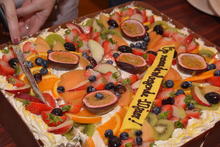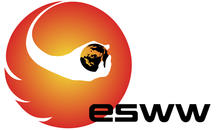press
Submitted on 2016-05-04Le lundi 9 mai, de 13h12m19s à 20h40m33s (heure locale) nous pourrons voir depuis la Belgique entière Mercure passer devant le Soleil, événement qui s'appelle transit de Mercure. Cet événement ne sera pas visible à l'oeil nu, un (petit) téléscope sera nécessaire.
Submitted on 2016-03-23On 22 March 2006, exactly 10 years ago, the Minister of Science Policy announced in a press release the foundation of the Solar-Terrestrial Centre of Excellence. The STCE would lift the Sun-Space-Earth research to a higher level by uniting experts in the field.
Submitted on 2016-03-23Il y a 10 ans, le 22 Mars 2006, le Ministre de la politique scientifique envoyait un communiqué de presse afin d'annoncer la création du Solar-Terrestrial Centre of Excellence. En réunissant les spécialistes concernés, ce centre devait élever la recherche sur les relations Soleil-Terre à un niveau supérieur. Le STCE devait aussi évoluer vers un centre performant étant à la disposition du gouvernement, du citoyen et des industries sensibles aux processus physiques d'origine solaire.
Submitted on 2016-01-15Space, solar and atmospheric radiation is a key factor in the sun-space-earth research and the high-technology that has to deal with or rely on it. Think of communication and navigation high-tech systems. This explains why there is a large interest in ground- and space based instruments measuring the electromagnetic radiation. However, a production line for scientific and technical instruments doesn't exist. Science and technological projects spanning several years are set up to develop a tailored instrument.
Submitted on 2015-12-01Since 2013, space weather medals are awarded at the annual European Space Weather Week conference. This year Dr. David Berghmans, a Belgian scientist at the Royal Observatory of Belgium, won the Marcel Nicolet medaille for his efforts to structure the space weather community at an international level.
Submitted on 2015-11-21Each year, during the European Space Weather Week (ESWW) conference, people from all over the world gather in Belgium to discuss the newest insights in space weather and try to find appropriate answers to the challenges and threats that space weather imposes. The meeting in 2014 was the eleventh edition, with more than 400 participants. Several communities - scientists, navigation based industry, space agencies, engineers, forecast centers, energy suppliers, space tourism, etc. - are involved in space weather in some way. The ESWW offers the platform to exchange knowledge and blend.
Submitted on 2015-08-18La semaine dernière, à l'assemblée générale de l'Union Astronomique Internationale (UAI) à Hawaï, la recalibration de la série temporelle des taches solaires a été annoncée. Cette série de taches solaires est la plus longue étude scientifique toujours en cours: c'est donc la clé pour l'étude de l'évolution du Soleil. Etant donné sa nature fondamentale, la série en question est utilisée fréquemment en astrophysique (pour l'évolution stellaire) et pour l'étude de l'impact à long-terme de l'évolution solaire sur la vie terrestre.
Pages
Zircon - This is a contributing Drupal Theme
Design by
WeebPal.













